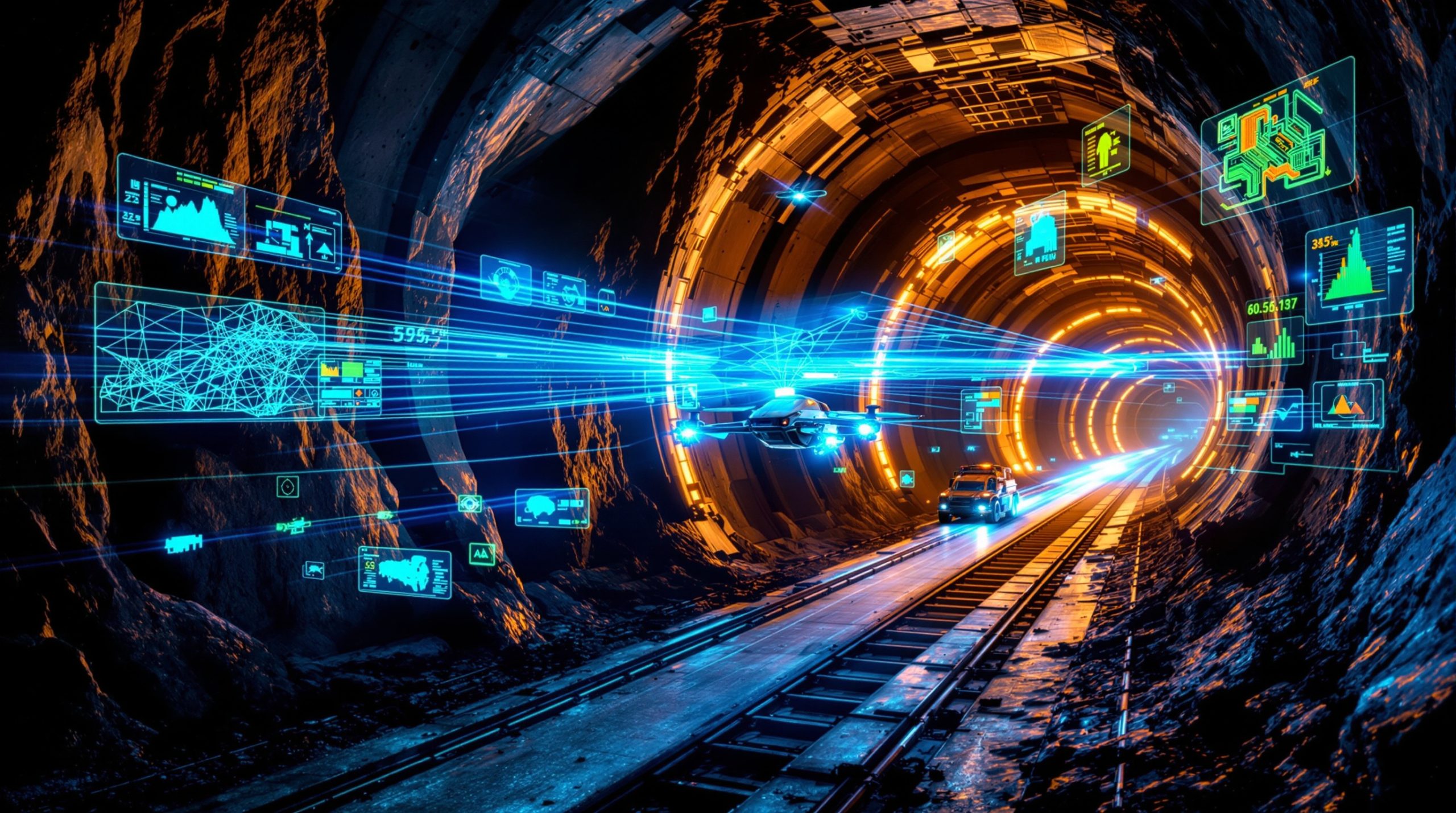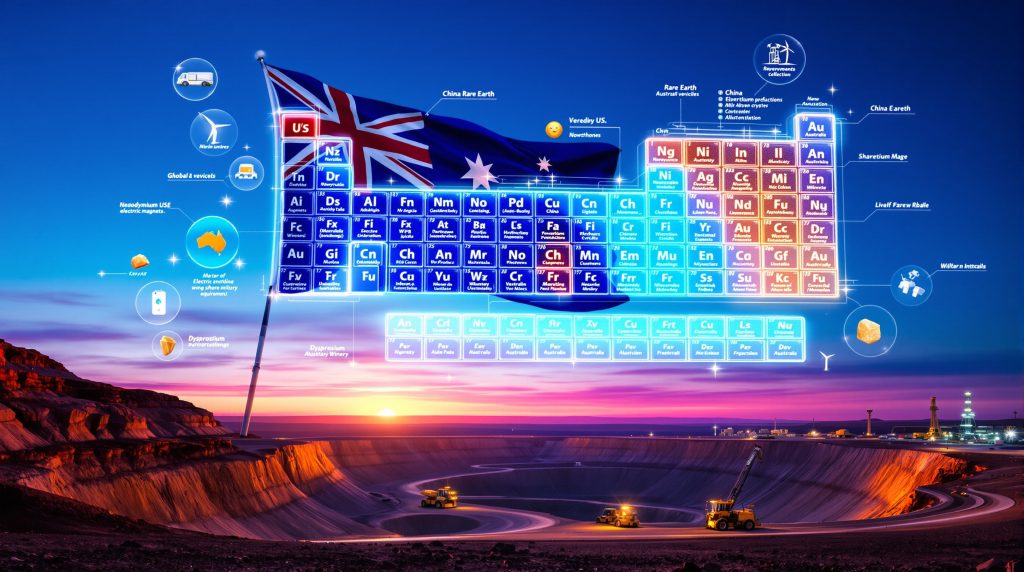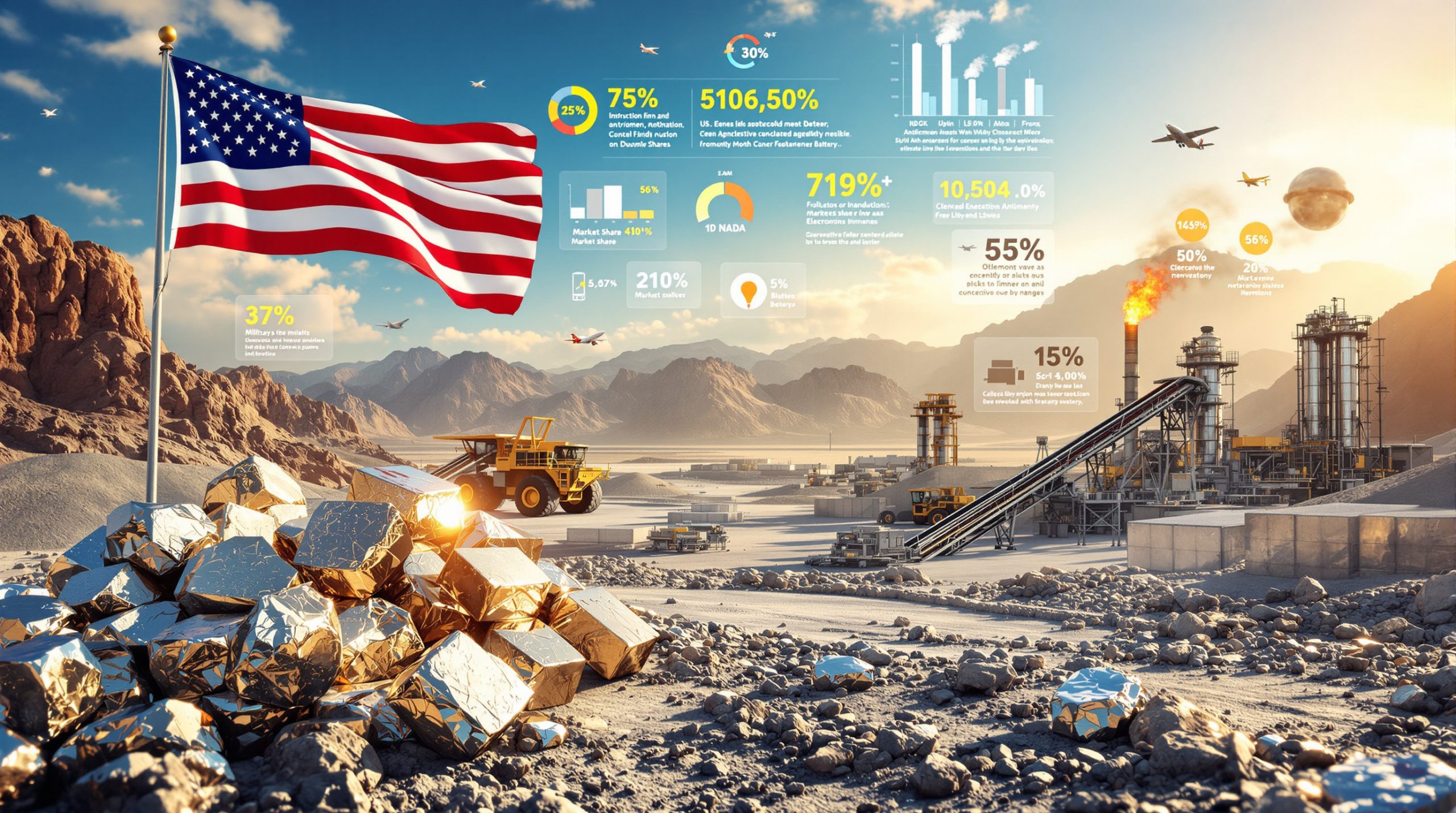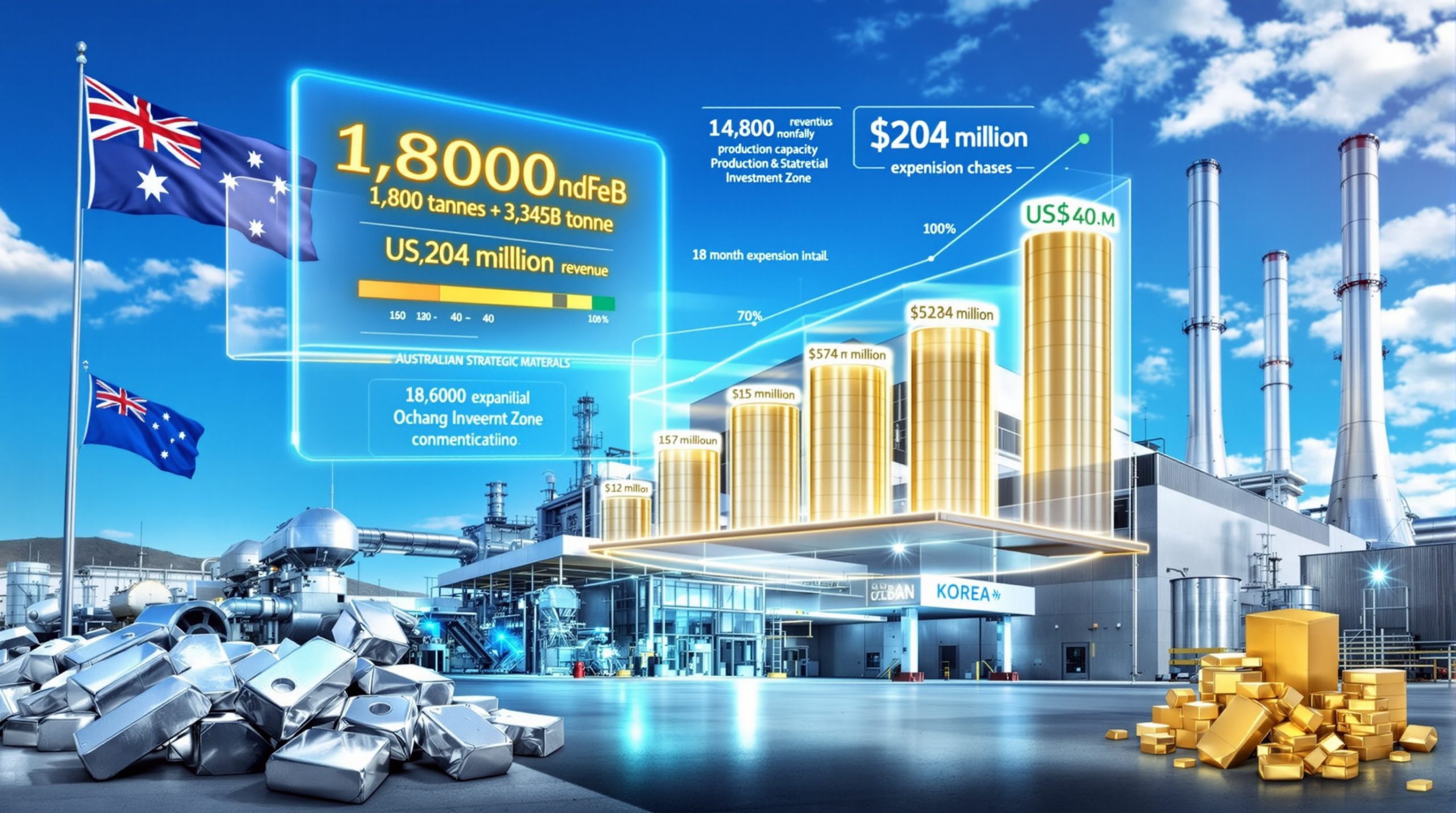What Are Rare Earth Elements and Why Do They Matter? Rare earth elements (REEs) comprise 17 metallic elements that have become indispensable in modern technology and clean energy applications. Despite their name suggesting scarcity, these elements aren't particularly rare in Earth's crust—they're actually relatively abundant. What makes them "rare" is the difficulty in finding economically viable concentrations and the complex extraction processes required to obtain them in usable forms. The Strategic Importance of Rare Earths Rare earth elements serve as critical components across numerous high-tech and clean energy applications. Their unique electromagnetic properties make them irreplaceable in many modern technologies. They're essential for producing permanent magnets used in electric vehicle motors and wind turbines, which operate with superior efficiency compared to alternatives. These elements also enable energy-efficient lighting systems and LED screens with enhanced color reproduction and brightness. Defense systems rely heavily on rare earths for precision guidance systems, radar technology, and communication equipment. Medical imaging equipment such as MRI machines cannot function without the superconducting magnets made possible by rare earth elements. Even everyday consumer electronics like smartphones, tablets, and laptops depend on these minerals for their compact size and performance capabilities. Types of Rare Earth Elements Light Rare Earths:These are generally more abundant and easier to process, though still challenging compared to common minerals. Key light rare earths include: Neodymium (Nd) – Critical for strong permanent magnets Praseodymium (Pr) – Used in magnets and specialized glass Cerium (Ce) – Applied in catalytic converters and glass polishing Lanthanum (La) – Essential for hybrid vehicle batteries and optical lenses Heavy Rare Earths:These are typically scarcer and command higher prices due to their specialized applications: Dysprosium (Dy) – Enhances magnet performance at high temperatures Terbium (Tb) – Crucial for green phosphors and magnets Yttrium (Y) – Used in LED phosphors and ceramic technologies Other heavy REEs with specialized uses in medical, defense, and technology sectors How Does Australia's Rare Earth Potential Compare Globally? The global rare earth production landscape remains heavily dominated by China, but Australia's position is strengthening as new projects come online. Australia's geological diversity provides it with significant potential across both light and heavy rare earth deposits. Current Global Production Landscape Country Annual Production (tonnes) Global Market Share China 270,000 70% United States 45,000 12% Australia 13,000 3% Others 57,000 15% China's dominance in production extends beyond just mining—the country controls nearly all global processing capacity for separating individual rare earth elements. This processing monopoly represents an even more significant strategic advantage than the mining operations themselves. Australia's Resource Advantage Australia possesses approximately 4% of global rare earth reserves, but its position in the market is poised to grow substantially. The country's geological formations offer diverse opportunities for extraction through various deposit types, each with unique extraction and processing requirements. Australia's rare earth resources include primary hard rock deposits similar to those found at Mount Weld, which contain high concentrations of light rare earths. The country also has promising clay-hosted deposits that can be more cost-effective to process than traditional hard rock ores. Some Australian projects are exploring ionic adsorption clay deposits similar to those that dominate heavy rare earth production in southern China. These deposits are particularly valuable as they typically contain higher concentrations of the scarcer heavy rare earths like dysprosium and terbium. Another advantage lies in the by-product potential from existing mining operations, particularly from mineral sands operations, which can produce rare earths as secondary products, improving overall project economics. What Major Rare Earth Projects Are Developing in Australia? Australia's rare earth sector is rapidly developing with several major projects at different stages of advancement. These initiatives represent a significant shift in the global rare earth supply chain and offer Australia the opportunity to become a key player in this strategic industry. Western Australia's Mining Powerhouse Western Australia has emerged as the center of Australia's rare earth mining industry, hosting several flagship projects that could transform the country's position in the global market. Mount Weld (Lynas Rare Earths)Mount Weld stands as Australia's largest and most developed rare earth operation. The mine produces a concentrated rare earth product that contains primarily light rare earths. According to the latest industry data, Lynas expects production to reach 17,500 tonnes of total rare earth oxide (REO) by the end of 2025. The operation primarily focuses on neodymium and praseodymium production, the two most commercially valuable light rare earths used in permanent magnets. Currently, Mount Weld material is processed at Lynas's facility in Malaysia, though the company is developing domestic processing capabilities to create a more secure supply chain. Eneabba RefineryThe Eneabba facility represents a major milestone as Australia's first domestic rare earth processing facility. Scheduled to begin operations in 2026, this project will enable a complete domestic value chain from mining through to separated rare earth products. The refinery will process rare earth concentrate from various Australian sources, reducing the country's reliance on overseas processing facilities. This development addresses one of the key vulnerabilities in the Western rare earth supply chain—the lack of processing capacity outside China. Northern Territory Developments Nolans ProjectLocated in the Northern Territory, the Nolans Project is currently under construction with significant progress toward production. The project has secured critical offtake agreements with major manufacturers including Hyundai, Kia, and Siemens, providing revenue certainty. Nolans will produce both light and middle rare earths, with a focus on elements used in permanent magnets and other high-tech applications. Beyond its economic potential, the project is expected to create hundreds of jobs in the region, providing significant benefits to the local economy. Heavy Rare Earths Focus Browns Range ProjectThe Browns Range Project stands out for its focus on heavy rare earth elements, making it particularly valuable in the global supply context. It represents one of the few non-Chinese sources of dysprosium and terbium, two critical elements for high-performance magnets that can withstand high temperatures. The project's mining lease was recently expanded, reflecting growing confidence in its potential. With production targeted by late 2027, Browns Range could help address the critical shortage of heavy rare earths outside China's production ecosystem. How Is Australia Addressing Processing Challenges? Processing rare earth elements presents technical challenges that have historically limited production outside China. Australia is taking a multifaceted approach to overcome these challenges through research initiatives and infrastructure development. Research and Innovation Initiatives Australia is investing heavily in research to overcome traditional processing obstacles that have limited rare earth production outside China. Government-backed research programs exceeding A$175,000 are exploring more efficient and environmentally friendly extraction methods. Partnerships between universities and industry players are developing new technologies specifically tailored to Australian ore types. These collaborations focus on sustainable processing methods that reduce the chemical intensity of traditional processing. Significant research is also being directed toward developing techniques for processing lower-grade deposits economically, which could substantially expand Australia's viable rare earth resources. This research may enable projects that would otherwise be uneconomical under conventional processing approaches. Processing Infrastructure Development The traditional challenge for Australia's rare earth sector has been the lack of domestic processing capability, forcing companies to export concentrate for overseas processing. This is changing with the construction of specialized processing facilities designed specifically for Australian rare earth ores. Substantial investment in separation technologies is allowing for the production of individual rare earth oxides domestically, capturing more value within Australia. Companies are developing cleaner processing methods that reduce environmental impact compared to conventional techniques used in other parts of the world. Industry efforts are focused on reducing harmful chemicals and waste products associated with traditional rare earth processing, addressing one of the key environmental concerns of the industry. These improvements not only enhance environmental outcomes but also improve the social license to operate for these projects. What Geopolitical Factors Are Driving Australia's Rare Earth Sector? Geopolitical considerations have become increasingly important in the rare earth industry, creating both opportunities and challenges for Australia's emerging sector. International tensions and supply chain security concerns are reshaping market dynamics in ways that favor Australian producers. China's Market Dominance China's control over rare earth production and processing has created significant supply vulnerabilities for industries worldwide. The country currently controls approximately 70% of global rare earth production, giving it substantial market power. More concerning to many Western nations is China's dominance of nearly all heavy rare earth production, which represents the most strategically important segment of the market. China has previously restricted exports during diplomatic disputes, most notably in 2010 during tensions with Japan. Recent developments continue this trend of strategic control, with China implementing new export controls in April 2025 on seven critical rare earth elements. These restrictions have accelerated efforts by Western nations to develop alternative supply sources. Western Supply Chain Security Concerns Australia's position as a stable, democratic nation with strong rule of law makes it particularly attractive for rare earth partnerships with Western nations concerned about supply security. The country has leveraged this advantage to position itself as a "trusted supplier" to Western allies seeking to reduce dependence on Chinese sources. Australia has become an integral part of critical minerals reserve agreements with the United States, Japan, and European Union, all of which are seeking to diversify their supply chains. The country has benefited from "friend-shoring" initiatives that aim to relocate critical supply chains to politically aligned nations. This geopolitical positioning offers Australia an alternative to competing solely on price with politically volatile supply sources that may have lower production costs but higher political risks. The premium that industrial consumers are willing to pay for supply security creates economic space for Australian projects that might otherwise struggle to compete on cost alone. What Environmental Considerations Impact Australian Rare Earth Mining? Environmental considerations play a crucial role in the development of Australia's rare earth sector. While the industry presents environmental challenges, Australian projects are implementing measures to address these concerns and operate more sustainably than many international competitors. Environmental Challenges Rare earth mining and processing historically present significant environmental concerns that must be carefully managed. One of the most significant issues is the potential for radioactive waste, as thorium and uranium often occur alongside rare earth elements in many deposits. Water usage and contamination risks present another major challenge, particularly in Australia's arid regions where water resources are already constrained. Conventional processing methods can require substantial quantities of water and potentially harmful chemicals. Land disturbance and rehabilitation requirements must also be addressed, especially in ecologically sensitive areas. The energy-intensive nature of processing rare earth materials contributes to the carbon footprint of these operations, presenting challenges for sustainability goals. Australia's Sustainable Approach Australian projects are implementing measures to address environmental impacts through regulatory frameworks and voluntary initiatives. The country maintains stricter regulatory frameworks than many competing jurisdictions, ensuring higher environmental standards. Significant investment in cleaner processing technologies is reducing the environmental footprint of new projects compared to conventional methods. Water recycling and reduced chemical usage are becoming standard practice in new Australian rare earth developments. Companies are incorporating rehabilitation planning from project inception, ensuring that environmental remediation is built into operational plans rather than addressed as an afterthought. These approaches not only improve environmental outcomes but also enhance social license to operate in communities concerned about mining impacts. What Economic Benefits Could Rare Earth Mining Bring to Australia? The development of Australia's rare earth sector offers substantial economic benefits beyond simple resource extraction. From job creation to advanced manufacturing opportunities, the industry presents diverse economic advantages for the country. Job Creation and Regional Development The expanding rare earth sector offers significant economic opportunities through direct and indirect employment. Major projects are expected to create hundreds of direct mining jobs in regions that often struggle with employment opportunities. Beyond direct employment, thousands of indirect supply chain positions will support these operations through services, equipment, and logistics. This multiplier effect extends the economic benefits throughout regional economies. Many rare earth projects are located in remote areas, bringing development opportunities to regions that have historically had limited economic diversity. The technical nature of these operations drives skills development in advanced manufacturing and processing, creating higher-value employment opportunities. Value-Added Processing Moving beyond raw material extraction to processing creates additional economic benefits through vertical integration of the supply chain. Higher value exports of processed rare earth products capture significantly more economic value than exporting unprocessed concentrates. The development of domestic processing capabilities facilitates technology transfer opportunities that can benefit the broader mining and manufacturing sectors. Research and development capabilities fostered by the industry contribute to Australia's innovation ecosystem. Over time, the rare earth industry could support the development of a broader manufacturing ecosystem centered around critical minerals energy security and advanced materials. This ecosystem development represents a potential pathway for Australia to diversify beyond its traditional role as a raw materials exporter. How Might Australia's Rare Earth Industry Evolve by 2030? With current projects advancing and global demand for rare earths continuing to grow, Australia's position in the market could strengthen substantially by 2030. Industry analysts project significant expansion in both production capacity and supply chain integration. Production Growth Projections With current projects advancing as planned, Australia could dramatically increase its global market share in rare earth production. According to industry forecasts, Australia has the potential to supply 15-20% of global ex-China neodymium-praseodymium (NdPr) demand by 2030. This growth would position Australia to become the second-largest global producer of rare earths, behind only China. The country's production profile is particularly well-aligned with growing Western demand for secure supply of magnet materials. Australia's strength in neodymium and praseodymium production is especially valuable given the critical role these elements play in permanent magnets for electric vehicles and wind turbines. This focus on magnet materials aligns with the highest growth segments of the rare earth market. Supply Chain Integration Australia's rare earth strategy extends beyond mining to create complete value chains that maximize domestic economic benefits. The development of domestic processing capabilities represents the first step in this integration, allowing for production of separated rare earth oxides within Australia. Looking forward, there is potential for magnet manufacturing to develop within Australia, capturing even more value from the raw materials produced domestically. Integration with Australia's growing electric vehicle industry could create synergies between critical minerals production and advanced manufacturing. Strategic partnerships with end-users in defense and renewable energy sectors could provide stable demand for Australian rare earth products while ensuring supply security for critical industries. This vertical integration approach offers a pathway to greater economic resilience and reduced dependency on overseas processing. What Challenges Must Australia Overcome? Despite the significant potential of Australia's rare earth sector, several challenges must be overcome to realize the full benefits of these resources. From technical hurdles to workforce development needs, the industry faces various obstacles on its path to maturity. Technical and Economic Hurdles The development of Australia's rare earth industry faces several technical and economic challenges that must be addressed. High capital costs for processing facilities represent one of the most significant barriers, with specialized equipment and complex chemical processes requiring substantial investment. The development of technical expertise presents another challenge, as rare earth processing requires specialized knowledge that is not widely available outside China. Australian projects must compete with subsidized producers in other countries, particularly China, where government support has enabled producers to operate at lower costs. Price volatility in rare earth markets creates uncertainty for project developers and investors, complicating long-term planning and financing. This volatility stems from both supply-side factors, such as export restrictions, and demand-side changes as technologies evolve. Skills and Workforce Development The specialized nature of rare earth processing requires focused workforce development efforts to build domestic capabilities. Training programs for specialized metallurgy are needed to develop the technical workforce required for processing operations. Research capabilities in separation technologies must be expanded to support ongoing innovation in processing methods. Engineering expertise for processing plant design represents another critical skill set that needs development within Australia. Environmental management specialists with specific knowledge of rare earth processing challenges are essential for ensuring sustainable operations. Addressing these workforce needs requires coordination between industry, government, and educational institutions to develop appropriate training pathways. How Is Global Demand for Rare Earths Evolving? Global demand for rare earth elements continues to grow, driven primarily by clean energy technologies and advanced electronics. Understanding these demand trends is essential for evaluating the long-term prospects of Australia's rare earth industry. Clean Energy Transition The global shift toward renewable energy and electrification is creating unprecedented demand for rare earth elements. Electric vehicle sales exceeded 17 million units in 2024, with the global EV fleet surpassing 58 million vehicles. This growth trajectory is expected to continue as countries implement policies to reduce carbon emissions. Wind energy capacity continues to expand rapidly worldwide, with permanent magnet generators requiring substantial quantities of neodymium and dysprosium. Energy efficiency regulations in many countries are driving demand for advanced lighting systems that utilize rare earth phosphors. As the clean energy transition accelerates, demand for rare earths is expected to grow at rates that challenge supply capabilities. This demand growth provides a strong foundation for new rare earth projects, particularly those focused on magnet materials. Technology Evolution Beyond clean energy applications, emerging technologies continue to create new applications for rare earth elements across various sectors. Robotics and automation systems increasingly rely on high-performance motors containing rare earth magnets for precision movement and efficiency. Advanced defense systems represent another growth area, with rare earths used in guidance systems, radar technology, and communication equipment. Medical technology innovations continue to find new applications for rare earth elements, from imaging equipment to targeted treatments. Next-generation computing devices, including quantum computing components, may create additional demand for specialized rare earth applications. These diverse technology trends suggest that demand growth will extend beyond the current dominant applications in magnets and catalysts. What Should Investors Know About Australia's Rare Earth Sector? For investors considering Australia's rare earth sector, understanding both the opportunities and risks is essential for making informed decisions. The industry offers significant potential returns but also faces various challenges that must be carefully evaluated. Investment Considerations For those considering investments in the sector, several key factors should be taken into account when evaluating opportunities. Long development timelines for projects mean that investors need patience, with many projects requiring 5-10 years from discovery to production. Government support through various initiatives, including research funding and infrastructure development, provides some risk mitigation for early-stage projects. The potential for strategic partnerships with end-users represents another advantage, as manufacturers seek to secure supply chains. Price sensitivity to global market conditions remains a significant consideration, with rare earth prices historically subject to substantial volatility. Investors should carefully evaluate how different projects are positioned to weather potential price fluctuations. Risk Factors Important risks to monitor include technical challenges in processing technology, which have historically been a major barrier to rare earth development outside China. The potential for market oversupply if too many projects advance simultaneously could impact prices and project economics. Ongoing competition with established producers, particularly those with government support, creates challenges for new entrants to the market. Regulatory changes affecting mining approvals, environmental requirements, or international trade could impact project timelines and economics. Despite these risks, Australia's rare earth sector offers significant potential for those willing to take a long-term perspective and carefully evaluate individual project merits. Implementing effective mining investment strategies can help navigate these challenges while capitalizing on the growing opportunities in this sector, particularly as US-China trade tensions continue to reshape global supply chains. FAQ: Australia's Rare Earth Mining Industry What makes rare earth elements "rare" if they're relatively abundant? While rare earth elements are actually quite common in Earth's crust, they rarely occur in concentrated, economically viable deposits. Unlike elements such as gold or copper that can form rich veins, rare earths tend to be dispersed at low concentrations. Their name derives from the rarity of the minerals in which they were originally discovered in the 18th century, not their abundance in nature. The real challenge lies in finding deposits with sufficient concentration to make extraction economically viable, and then separating these chemically similar elements from each other during processing. Why can't Australia simply export rare earth ore without processing? Raw rare earth ore has limited value compared to processed oxides and metals because the valuable elements make up only a small percentage of the total material. Shipping unprocessed ore would mean transporting large volumes of waste material, making it economically impractical. Additionally, the complexity of separating individual rare earth elements requires specialized processing facilities that use precise chemical processes to isolate each element. Building domestic processing capability captures more economic value within Australia and ensures supply chain security by reducing dependence on overseas processing facilities that may be subject to geopolitical risks. How do Australian environmental standards compare to other rare earth producers? Australia maintains some of the world's strictest environmental regulations for mining operations, significantly more rigorous than those in many competing jurisdictions. Australian projects must comply with comprehensive environmental impact assessments, water management plans, and rehabilitation requirements. While these standards create higher operational costs compared to some international competitors, they result in more sustainable practices with reduced long-term environmental liabilities. The higher environmental standards also provide Australian producers with marketing advantages when selling to environmentally conscious customers and may help secure premium pricing from buyers concerned about the environmental footprint of their supply chains. What role does the Australian government play in developing the rare earth sector? The Australian government has designated rare earths as critical minerals and provides various support mechanisms to encourage sector development. This includes research funding through scientific agencies focused on improving processing technologies and reducing environmental impacts. Regulatory assistance helps navigate the complex approval processes required for new mining and processing facilities. Potential financial backing through agencies focused on critical minerals development can help bridge funding gaps, particularly for processing infrastructure. The government also facilitates international partnerships through trade agreements and diplomatic initiatives that help secure offtake arrangements with allied nations seeking to diversify their rare earth supply chains. Are rare earths truly essential, or are there alternatives? For many applications, particularly high-performance permanent magnets, rare earth elements remain essential with no viable substitutes that offer comparable performance. While research into alternatives continues, current substitute materials typically result in significantly reduced performance, efficiency, or increased size and weight. For example, electric vehicle motors without rare earth magnets require more copper and other materials, making them heavier and less efficient. Research into alternatives continues across various applications, but for the foreseeable future, rare earths will remain critical to clean energy technologies, advanced electronics, and defense systems where performance requirements are stringent and space or weight constraints are significant. Looking to Gain an Edge in Rare Earth Investments? Discover significant rare earth announcements the moment they happen with Discovery Alert's proprietary Discovery IQ model, giving you a decisive advantage in this rapidly evolving sector. Explore how previous mineral discoveries have generated exceptional returns by visiting our discoveries page.

Emesent Hovermap Revolutionises Underground Mine Safety and Mapping
Explore how Emesent Hovermap revolutionizes underground mine safety through autonomous



